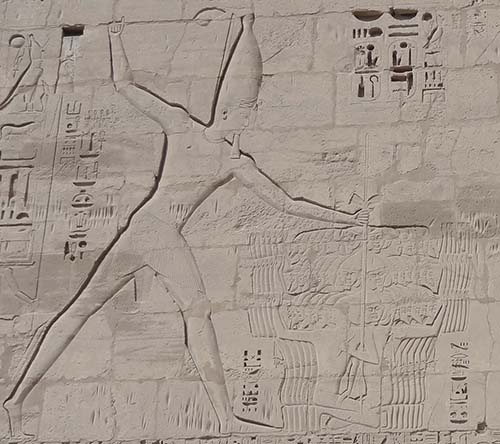
This talk will focus on one of the most common and enduring visual motifs from ancient Egypt: the pharaoh in the act of smiting his enemies.
While scholars have extensively discussed the multiple layers of complementary and highly significant meanings that the scene had, they have dismissed the representation itself as banal and mundane.
However, associated texts, gestures, and compositional details indicate that in these images the king and his enemies were acutely experiencing or displaying emotions, including rage, fear, and suffering, despite their expressionless faces. At the same time, the scene was intended to elicit particular emotional responses, such as joy and happiness, from ancient viewers. In this way, the smiting scene serves as a case study to investigate how Egyptian artists visualized emotions and the role of particular emotions in ancient Egyptian visual culture.
About Tara Prakash
Tara Prakash is an Assistant Professor at the College of Charleston. She received her PhD from the Institute of Fine Arts at the New York University. She has held postdoctoral fellowships at the Metropolitan Museum of Art and Johns Hopkins University, and she previously was the W. Benson Harer Egyptology Scholar in Residence at California State University, San Bernardino.
Her research focuses on issues of ethnicity and identity, foreign interactions, artistic agency, and the visualization of pain and emotion in ancient Egypt. Her recently published book, Ancient Egyptian Prisoner Statues: Fragments of the Late Old Kingdom (Lockwood Press), is the first comprehensive study on the prisoner statues, a unique series of Egyptian statues that depict kneeling bound foreigners.